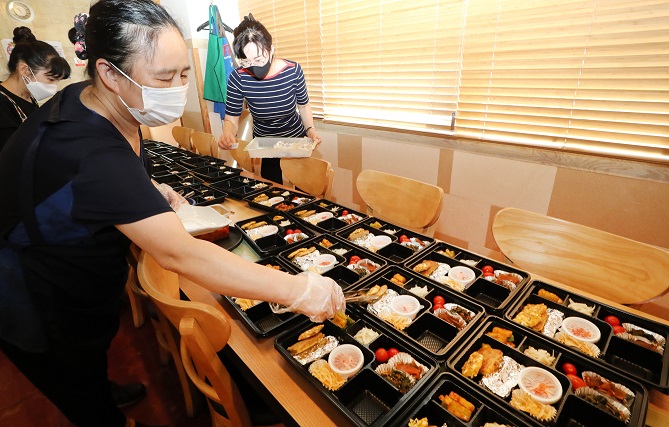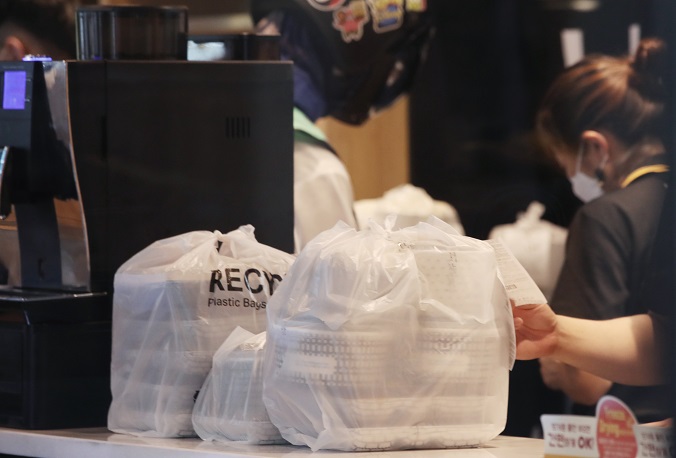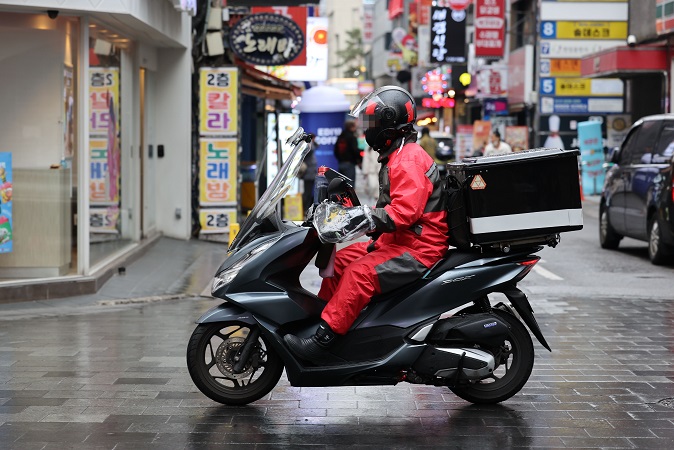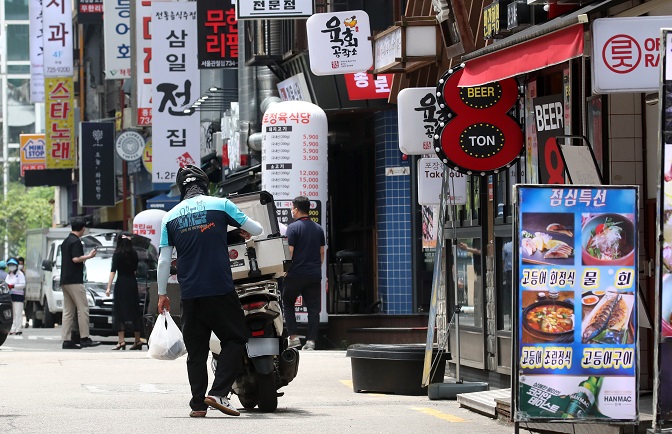SEOUL, Feb. 17 (Korea Bizwire) — The rapid growth of South Korea’s food delivery market during the COVID-19 pandemic has caused a sharp increase in delivery fees, leaving small business owners and consumers struggling to cope with the added costs.
As the demand for food delivery services has surged in recent years, delivery companies have been grappling with the challenge of securing enough delivery workers, often referred to as “riders” in South Korea, to meet the demand.
To do so, they have been forced to offer increasingly attractive pay packages in the form of wages and incentives.
This increase in the cost of labor has been passed on to consumers in the form of higher delivery fees.
Popular delivery apps such as Baedal Minjok (Baemin) and Coupang Eats have had to raise their brokerage and delivery fees in response to rising labor costs.
In 2020, a delivery company that previously charged 3,000 won (US$2.31) per delivery increased its fees by nearly 50 percent to around 4,500 won in 2022.
The cost for single-item deliveries rose from 5,000 won to 6,000 won in March of last year.
This has had a significant impact on the fees paid by restaurants to these delivery platform companies. Over the past two years, the delivery fees charged by these companies to restaurants have increased by 33-50 percent.
In particular, the delivery fee for a single food delivery is now at least 6,000 won, which is equivalent to the price of a meal.
For restaurants that rely heavily on food delivery services to reach customers, these higher fees can put a strain on their already tight profit margins.
Some have responded by increasing menu prices or reducing their offerings on delivery apps.

A worker at a restaurant in central Seoul makes boxed lunches to be delivered on Aug. 31, 2020. (Yonhap)
Overall, the rising cost of labor in the food delivery industry is putting pressure on all players involved.
Delivery companies are struggling to balance the need to attract and retain riders with the need to keep fees reasonable for restaurants and consumers.
Meanwhile, restaurants are finding it increasingly difficult to maintain their profitability in an industry where delivery has become a key component of their business model.
The rise in delivery fees can be attributed to the intense competition to secure delivery workers, as the cost of riders has risen.
To compensate, delivery companies and apps have raised brokerage and delivery fees charged to restaurants, which are then passed on to consumers in a vicious cycle of escalating costs.
Consumers are paying almost the same amount for delivery as they are for their food, with the average delivery tip paid by consumers based on the maximum distance being 5,000 won in February.
The average amount for Baemin delivery tips was 5,810 won, with a minimum of 4,310 won and a maximum of 7,310 won.

This Aug. 25, 2020, photo shows food wrapped in plastic containers and bags for delivery at a restaurant in Seoul. (Yonhap)
However, many delivery-related companies are struggling with losses, leading to some companies being sold.
Woowa Brothers Corp., which operates Baemin, the No. 1 delivery app by market share, has been in the red for three consecutive years since 2019, with operating losses of 75.6 billion won in 2021.
GS Retail Co.’s Yogiyo, the second-largest market player, reportedly lost 63.7 billion won (US$49 million) in the first half of last year, and Coupang Eats, the food delivery arm of e-commerce leader Coupang, reportedly lost tens of billions of won.
One of the main factors contributing to this situation has been the fierce competition between delivery apps and companies to expand rapidly during the pandemic.
Companies such as Baemin and Coupang Eats paid delivery workers an additional delivery fee of 2,000 won to 2,500 won per delivery in 2021 in order to secure their services.
They also offered prizes such as camping cars worth 50 million won or pure gold worth 25 million won to delivery workers, or paid additional fees of 50,000 won to 60,000 won a day.
This competition has resulted in a continuous rise in delivery fees, leaving both consumers and businesses feeling the effects.
According to a government-issued report, the number of domestic delivery workers in South Korea has doubled in just three years, reaching 237,100 in the first half of 2022.
This unprecedented surge is primarily attributed to the impact of the pandemic, which has accelerated the growth of the online shopping and food delivery industries.
The average monthly income of delivery workers was reported to be 3.81 million won, earned by working an average of 25.3 days per month.
Notably, 57 percent of the delivery fees fell in the 2,000 won range, and consumers generally considered a 10 percent fee on the food price as reasonable.
According to recent data, the monthly net income of delivery workers in South Korea far surpasses that of their taxi driver counterparts.
In Seoul, delivery workers earn an average monthly net income of 3.14 million won. This figure takes into account various expenses such as insurance premiums and rental costs.
By comparison, the average monthly income for taxi drivers in Seoul is just 1.69 million won, less than half of what delivery workers make.
In fact, delivery workers across the country have a monthly net income of 2.86 million won, which is more than double the income of the average taxi driver.
The significant income gap between these two types of drivers can be attributed to the rise in demand for food delivery services, particularly during the pandemic when many people were forced to stay home.
Overall, the data suggests food delivery has become a more lucrative option than traditional taxi driving in South Korea, particularly in areas with high demand and population density.
This highlights the rapid expansion of the delivery industry in South Korea, and the growing importance of delivery workers in facilitating the country’s e-commerce and food delivery sectors.
Kevin Lee (kevinlee@koreabizwire.com)








As the delivery services industry grows, the accident risks and costs increase too.
Thus, let us share a few safety tips and what you need as delivery riders.
Excellent details about customers and restaurants Feel the Pain of Rising Delivery Costs, many thanks for providing this kind of information with us. The best and most intriguing information is provided by your site. Well, I went to another website called Santa Lucia Pizza, which had some wonderful and related material.
This article provides insight into the problem of rising delivery prices and how it affects diners and eateries. Many people are worried about how the industry’s viability and accessibility will be impacted by the rising costs of meal delivery services. Finding a happy medium between competitive pricing and reliable service is essential for any successful enterprise. This article provides helpful context for understanding the difficulties encountered by the food delivery industry and the necessity of creative approaches to these problems.